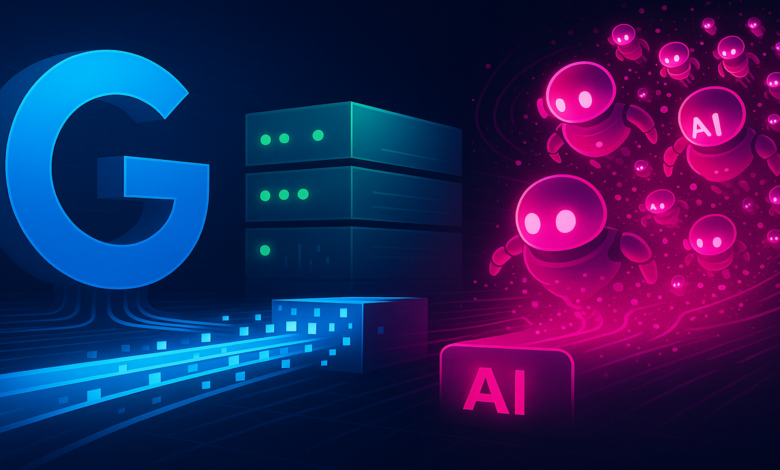Google Drives 831x More Traffic Than AI Rivals: Report

▼ Summary
– Google sends publishers 831 times more visitors than AI systems, according to TollBit’s Q2 2025 report.
– AI bot traffic increased significantly, with 1 in 50 visitors being an AI bot by Q2 2025, up from 1 in 200 at the start of the year.
– AI referrals accounted for only 0.102% of traffic, with click-through rates 91% lower than top organic search results.
– Publishers are pushing back, with a 336% year-over-year increase in blocking AI bots and 13.26% of AI bot requests ignoring robots.txt rules in Q2 2025.
– Human visitors to TollBit-tracked sites fell 9.4% from Q1 to Q2 2025, threatening publishers with higher costs and lower revenue.
A recent analysis reveals that Google drives an astonishing 831 times more traffic to publishers than all artificial intelligence systems combined. Despite this overwhelming dominance in referral traffic, AI bots are swarming publisher websites at unprecedented rates, escalating operational costs through relentless content scraping while frequently disregarding established access protocols. These automated visitors contribute virtually no meaningful human traffic in return for the content they consume.
The data shows a notable shift in Google’s share of external traffic, declining from over 90% in the second quarter of 2024 to 84.1% during the same period in 2025. In stark contrast, AI applications accounted for a minuscule 0.102% of referral traffic. The performance gap becomes even more apparent when examining engagement metrics, click-through rates from AI interfaces measured 91% lower than those from top organic search results. This translates to approximately 135 AI content extractions being necessary to generate just one human visitor.
Publishers who established formal licensing agreements with OpenAI experienced significantly different outcomes, witnessing 88% more scraping activity alongside substantially stronger referral rates compared to those without such arrangements.
The composition of web traffic is undergoing a dramatic transformation as AI bots become increasingly prevalent. Human visits to monitored sites dropped by 9.4% between the first and second quarters of 2025, while AI-driven traffic surged upward. The ratio of AI bots to human visitors intensified from 1 in 200 at the beginning of 2025 to 1 in 50 by the second quarter, a fourfold increase that now positions AI bot traffic above Bingbot, previously the world’s second-largest search crawler.
Google’s expansion of its AI Overviews feature in October triggered a 34.8% rise in Googlebot crawling activity, though the efficiency of these crawls diminished as the crawl-to-referral ratio deteriorated by 24.4%.
Consumer behavior patterns are evolving as AI tools increasingly provide direct answers instead of directing users to publisher websites. Business and professional content experienced the most intensive scraping relative to human traffic, while the fastest growth in AI requests occurred for parenting content (333% increase) and deals/shopping information (111% increase). National news outlets received five times more real-time retrieval-augmented generation scrapes than training crawlers.
Geographical disparities emerged clearly in the data, with Asia-Pacific websites absorbing three times more AI requests than their United States counterparts, while European sites saw 27% fewer AI inquiries.
The tension between publishers and AI companies continues to escalate as automated systems frequently bypass established guidelines. Publisher implementation of AI bot blocking surged 336% year-over-year, while automated paywall interactions jumped 360% between the first and second quarters of 2025. The proportion of AI bot requests ignoring robots.txt directives climbed from 3.3% in late 2024 to 13.26% by mid-2025.
Technical performance varied significantly across AI platforms. OpenAI’s 404 error rate ballooned from 0.3% to 3.7%, often resulting from fabricated URLs, while Anthropic’s Claude demonstrated substantial improvement, its error rate plummeting from 55% to 4.8% after gaining live web access capabilities.
These developments paint a concerning picture for the open web ecosystem. With human visitors declining and AI bots multiplying while contributing minimal referral traffic, publishers face mounting operational costs with diminishing returns. This trajectory threatens the fundamental business model supporting web publishing, potentially leading to reduced clicks, diminished customer acquisition, and declining revenue streams absent significant industry changes.
(Source: Search Engine Land)


